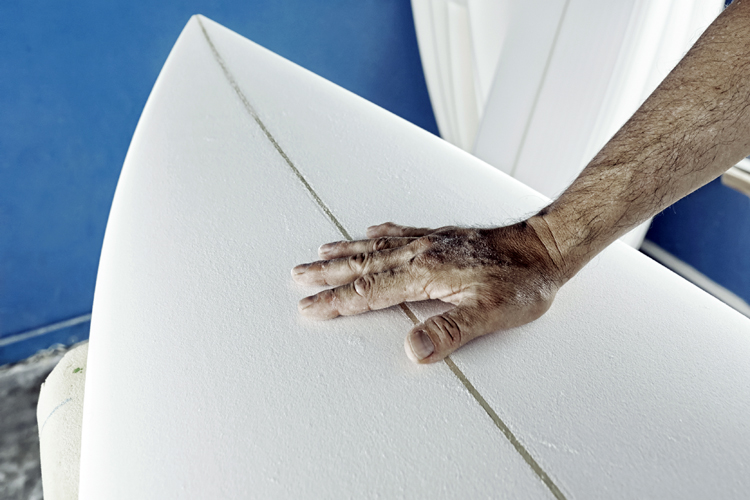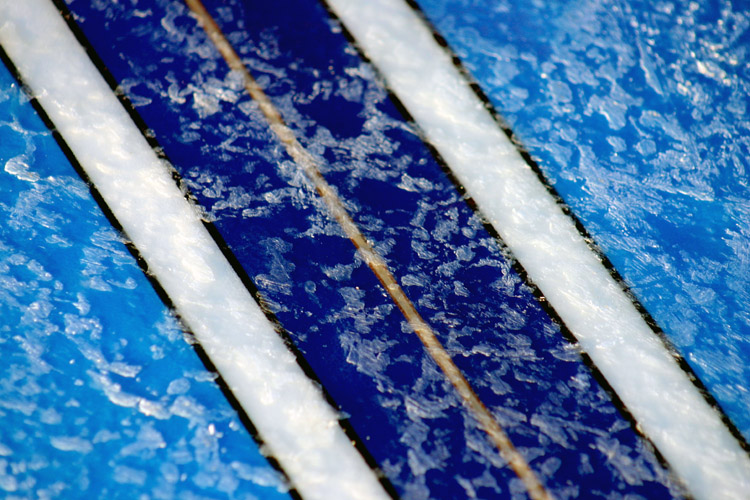A surfboard stringer is a thin strip of wood that runs from nose to tail down the center of the polyurethane (PU) foam blank. The center stringer adds stiffness and rigidity to the surfboard.
The stringer was introduced in surfboard design in 1958 by Gordon Duane, the founder of Gordie Surfboards. He wanted to reduce the flexibility and add strength to the polyurethane core structure.
So, how is a stringer inserted on a surfboard? The pre-shaped, molded PU blank is cut in half lengthwise, and then the stringer is dropped in and glued before clamping the pieces together.
The width of a stringer also varies depending on the board.
A classic shortboard usually features a 3/16'' (4.7 mm) wide stringer; big wave guns and longboards have 3/8'' (9.5 mm) stringers.
However, epoxy-based boards don't usually incorporate any stringer.
There are also parabolic stringers. They add an arc along the rails of the board for extra memory flex. Whenever submitted to tough conditions, the board will bend and return to its original shape.
There are also shapers who add multiple stringers - usually two or three - to wider boards, like big longboards, for extra rigidity.
In any case, stringers are a fundamental part of a surfboard.

Stringer Wood Species
Stringers are traditionally made of balsa, but several types of wood can be used.
Let's take a look at the density of the most common wood species used in surfboard stringers:
- Balsa: 7-9 (lb/ft3);
- Western Red Cedar: 20-33 (lb/ft3);
- Basswood: 20-37 (lb/ft3);
- Cedar: 23-36 (lb/ft3);
- Engelmann Spruce: 28 (lb/ft3);
- Redwood: 28-32 (lb/ft3);
- Plywood: 31-56 (lb/ft3);
- Birch: 42 (lb/ft3);
Surfboard stringers are lightweight, buoyant, and low-density. But they should be able to resist and absorb the typical impacts that occur during surfing.
From a functional perspective, when you turn your board, you're compressing it and bending the stringer.
Then, when you come out of a cutback, for example, it flexes the board and projects you out of the turn.
It is also essential that the shaper aligns the materials used in surfboard construction with the type of waves a specific board will encounter.
The choice of a stringer will always be a trade-off between strength, flexibility, and weight.
Ideally, a surfer needs a surfboard that delivers a balanced flex/strength ratio and provides a smooth and comfortable ride in both bumpy and glassy waves.
